How To Properly Brush Your Pet's Teeth
Doc Halligan, Lucy Pet Foundation
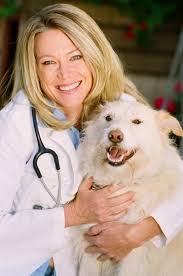 When I began working as a veterinary technician more than 20 years ago, I never dreamed of encouraging pet owners to brush their cat or dog's teeth. But, all of that has changed.
When I began working as a veterinary technician more than 20 years ago, I never dreamed of encouraging pet owners to brush their cat or dog's teeth. But, all of that has changed.
Just like us, dogs and cats have two sets of teeth during their lives. They have primary, or baby, teeth that fall out and are replaced by permanent adult teeth.
Bad breath, or halitosis, is a sign of ill health. Shedding, drooling and licking are normal, but halitosis is a symptom of disease and white teeth doesn't mean there aren't bacteria hiding under the gums just waiting to cause a problem.
Unfortunately, many pets do not show any symptoms of dental disease until the problem is severe with irreparable damage.
The goal is simple: keep your pet's teeth clean. Brushing your pet's teeth is the easiest and most cost-effective way to prevent dental disease and the other health problems that come with it. Proper brushing will also save you money by decreasing the number of times your pet will need professional cleaning over its lifetime.
You want to start brushing as soon as the baby teeth erupt, usually at around 3 to 4 months of age, or as early as possible. The sooner you begin brushing, the more accepting your pet will be. Remember that most animals are not used to having someone's fingers in their mouth. But with a little patience, practice and persistence, your pet may actually look forward to bonding with you through tooth brushing or, at the very least, accept it as the norm. Your cat or dog can't do it alone, so it's up to you to do it for them.
First and foremost, keep tooth-brushing sessions short and fun. If you are nervous, your pet will be nervous too. Have a positive attitude. Make your pet think of it like getting a treat. You need to make the process as pleasant as possible. In fact, you are not going to brush them the first time. You need to build up to it. This could take one month; this could take two months, even three months or more.
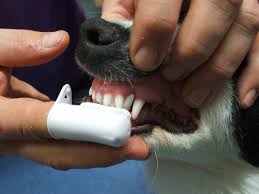 Start the sessions at the end of the day when your pet is tired and not all wound up, especially with dogs. Don't do it first thing in the morning before they have their walk. Try not to restrain your pet too tightly. Brushing should be a bonding experience reinforced with praise and rewards. It should never be traumatic for you or your pet.
Start the sessions at the end of the day when your pet is tired and not all wound up, especially with dogs. Don't do it first thing in the morning before they have their walk. Try not to restrain your pet too tightly. Brushing should be a bonding experience reinforced with praise and rewards. It should never be traumatic for you or your pet.
To start with, you should dip your finger in tuna broth or beef bullion. When they approach you, put your finger on their lip, but don't open their mouth. You can try to push into their mouth and see if they open it for you. Keep the session short and give them a treat when you are done. You need to take baby steps, as it is very unnatural for you to put your finger in your pet's mouth.
When you have them used to your finger, you are ready to try brushing their teeth. You will need a toothbrush made especially for pets. Cat and dog toothbrushes are designed for pets and are extremely soft. There are several choices of styles, including a straight or angled toothbrush that's similar to the one you use; a finger brush that fits onto the end of your finger; and even an electric one with vibrating bristles. It's important never to use a toothbrush meant for people, not even a child's size, as the bristles are too hard. You can then apply the tuna broth or beef bullion to the toothbrush.
Each pet should have its own toothbrush to prevent the spread of germs and bacteria. (If any out-of-town guests are staying with you, don't forget to warn them that your pets have their own toothbrushes and toothpaste!)
When you have accomplished this, you can then switch to toothpaste. Pet toothpaste comes in yummy flavors such as tuna, poultry, malt and beef. Since cats and dogs don't spit out the toothpaste or rinse like we do, they need to use toothpaste that is made for pets. Look for brands that contain enzymes to help control plaque. Don't ever use toothpaste made for people because it contains detergents that may cause stomach upset in pets when swallowed, and besides, all of the excess foaming may scare your pet—so stick to toothpaste that is made for dogs and cats.
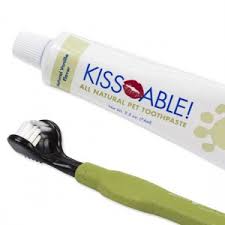 You really only need to worry about the outsides of the top and bottom teeth, and you can keep the mouth closed by placing your hand around your pet's muzzle. Lift the cheek on one side of the mouth and brush the outside surface of the teeth just as you would brush your own. The brush movement should be in a circular pattern with ten short motions cover three to four teeth at a time. Placing your index finger directly behind the bristles will help stabilize the brush. Increase the number of teeth brushed each time until your pet accepts the routine willingly. Keep the sessions at 15 to 30 seconds initially.
You really only need to worry about the outsides of the top and bottom teeth, and you can keep the mouth closed by placing your hand around your pet's muzzle. Lift the cheek on one side of the mouth and brush the outside surface of the teeth just as you would brush your own. The brush movement should be in a circular pattern with ten short motions cover three to four teeth at a time. Placing your index finger directly behind the bristles will help stabilize the brush. Increase the number of teeth brushed each time until your pet accepts the routine willingly. Keep the sessions at 15 to 30 seconds initially.
If your cat or dog is reluctant, don't try brushing all of the teeth right away. Just start with one or two teeth a day until your pet realizes that tooth brushing is okay, and then work your way up to eventually brushing all of the teeth. It should only take 30 seconds of brushing on each side of your pet's mouth.
In time you will be surprised by how easy it is to add brushing to your pet's daily routine without interrupting your life. Find a convenient time when your pet is relaxed, such as after a walk, or after eating or napping. Try brushing while you watch TV together, or if your pet is most at ease while sitting on your lap, brush then.
You need to work up to brushing every day, or at least every other day, anything less than that is not helping your pet. Try getting into the habit of brushing your pet's teeth either before or after you brush your own.
But what if you have a pet, that no matter how hard you try, will not let you brush their teeth? Don't despair; even if you can't brush your pet's teeth, there are other ways to administer at-home dental care.
1. There are sprays and gels available that can be easily applied to the tooth and gum surfaces.
2. In lieu of a toothbrush and toothpaste, you can opt for dental pads or wipes that you wrap around your finger to brush the teeth with.
3. There are different chew toys and treats for your pet to gnaw on that simulate brushing. These include chew strips, rawhides, dental bones, and rubber chew toys. Some manufacturers add tartar-reducing enzymes to these products to help further prevent plaque buildup.
4. Diets are now available that can help reduce the formation of plaque deposits. These special foods have abrasive particles that will help mechanically remove plaque.
It is never too late to start brushing your pet's teeth. However, your pet still needs to have its teeth cleaned professionally, just like you do. The only way the vet can properly clean your pet's teeth is when your cat or dog is completely anesthetized. Trying to perform these procedures on a pet that is awake is unrealistic, even with the best-behaved animal. The oral cavity must be examined extensively in order to assess all of the teeth, gums, and roots for signs of disease.
Many people balk at anesthesia due to the perceived risks, but in truth, the risks are negligible compared to those of letting your pet develop dental disease. Numerous precautions, including the use of safe short-acting anesthetics, a complete physical exam, knowledge of your pet's medical history, blood work, antibiotics, pain killers and x-rays, make the dangers of anesthesia low in contrast to the risks of disease that can occur by not cleaning your pet's teeth. This is true even in the geriatric patient. Even before (and certainly after) your pet has accumulated tartar, it's time to have the teeth professionally cleaned by your veterinarian. Virtually all equipment that dentists have for people, veterinarians now have for cats and dogs.
Don't be sucked into the anesthesia free dental cleanings - it needs to be done properly and under anesthesia. Doc Halligan states that this is a VERY DANGEROUS procedure. Just like it states, the animal is awake during this procedure, which is already hard to do. But now you are using instruments to clean the plaque, which scrapes the enamel. This leaves scrapes on the teeth, which are supposed to be smooth, because you are unable to properly polish the teeth on an animal that is awake. So what happens to these scrapes? They will eventually cause the teeth to rot. Doc Halligan states she can always tell when an animal has undergone anesthesia free dental cleanings because of the decay in their teeth. You think you are helping your pet by doing this, but you're not. You're actually better off not doing anything to their teeth if you are thinking about an anesthesia free procedure.
Routine preventative care is critical for proper dental hygiene. This protects your pet from painful dental problems and protects you from the expense of veterinary care needed to treat advanced periodontal disease.
The Mission of The Lucy Pet Foundation is to reduce pet overpopulation by having mobile spay/neuter clinics across the country and to support causes that benefit animal welfare. The Lucy Pet Foundation currently has two buses that travel around Southern California focusing on spaying and neutering. These buses are state of the art surgery units. Their next focus is in generating more funds to expand the work of these buses and have more across the country.
 The Lucy Pet Foundation not only offers free and reduced spays and neuters, they also do microchipping, vaccines and de-wormings. Spaying and neutering is not only great for pet population control, but it has been proven that an animal will live on an average of 40-percent longer after having this surgery.
The Lucy Pet Foundation not only offers free and reduced spays and neuters, they also do microchipping, vaccines and de-wormings. Spaying and neutering is not only great for pet population control, but it has been proven that an animal will live on an average of 40-percent longer after having this surgery.
Upcoming March Clinics
Free Spray & Neuter for Los Angeles City Residents! Here is a list of upcoming free or reduced fee mobile spay and neuter clinics in California:
Call for more information, questions and to reserve space to get on the list: (855) 499-5829
March 1, 8, 15, 22 & 29: West Valley Shelter, 20655 Plummer Street, Chatsworth, CA Spay/Neuter Clinic - 7:30 am; Vaccine Clinic 10:00am-2:00pm
March 2 & 24 : Algin Sutton Rec Center, 8800 S. Hoover St., Los Angeles, CA Spay/Neuter Clinic - 7:30 am; Vaccine Clinic 10:00am-2:00pm
March 4, 5, 11, 18, 19 & 25: Hansom Dam Recreation Center, 11480 Foothill Blvd., Los Angeles, CA Spay/Neuter Clinic - 7:30 am; Vaccine Clinic 10:00am-TBA
March 7 & 21: Century 21, 8307 Foothill Blvd., Sunland-Tujunga, CA Spay/Neuter Clinic - 7:30 am; Vaccine Clinic 10:00am-2:00pm
March 10: Monterey Park, 350 S. McPherrin Ave., Monterey, CA Spay/Neuter Clinic - 7:30 am; Vaccine Clinic 10:00am-2:00pm
March 16 & 30: Food 4 Less, 1748 West Jefferson Blvd., Los Angeles, CA Spay/Neuter Clinic - 7:30 am; Vaccine Clinic 10:00am-2:00pm
Remember, you must get on a list to have your pet seen at these locations. Please call The Lucy Pet Foundation toll free at 1-855-499-5829 or Email: Info@lucypetfoundation.org to schedule an appointment, or register at the events.
See the current list of clinics at http://www.lucypetfoundation.org.
http://www.lucypetproducts.com
3 Pet Threats Your Worry Too Much About & 3 Things You Worry Too Little About
Dr. Marty Becker, America's Veterinarian
 What are the three things that pet owners worry too much about and three things they worry to little about?
What are the three things that pet owners worry too much about and three things they worry to little about?
The first thing people worry too much about is what kind of parasite control product to use. You see ads on television, you see many different products in the stores and online, as there are so many different types of products. You don't need to worry so much about which product you use. You may have been using the same one for years or you may ask your vet for a recommendation, there may even be a product that's on sale. While you should ask your vet what to use, and don't be afraid to tell them you will buy it from somewhere else, and then just stick with it.
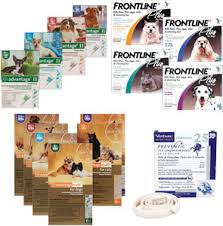 On the other hand, people worry too little about even using a parasite control product as directed year round for the life of your pet. People try to time it by going on and off of it depending upon the time of year and weather, or whether their pet is indoors our outdoors.
On the other hand, people worry too little about even using a parasite control product as directed year round for the life of your pet. People try to time it by going on and off of it depending upon the time of year and weather, or whether their pet is indoors our outdoors.
Bottom line is that you should always have your pet on parasite control medication year round as directed for life.
The second thing people worry too much about is what they feed their pet. Dr. Becker works with a group of veterinarians who states that they have never seen a pet come in with a nutritional deficiency. Yes, there are pets hat have certain allergies to certain types of food and may need a special diet. Or, they may need a food that contains something for their joints or for a sensitive stomach. So probably what you are feeding your pet is fine, whether you buy cheap or expensive commercial food or make your own pet food.
 The problem is that most people don't worry enough about how they feed their pet. It is a good idea to use food puzzles and food dispensing devices. There has been a recent push towards more enrichment activities for pets. Think of lions and tigers in zoos. They actually have more enrichment activities than the average cat in a home. So much of an animal's exuberance revolves around hunting for food. You shouldn't just drop some food in a bowl and forget about all of the other pieces that go along with hunting.
The problem is that most people don't worry enough about how they feed their pet. It is a good idea to use food puzzles and food dispensing devices. There has been a recent push towards more enrichment activities for pets. Think of lions and tigers in zoos. They actually have more enrichment activities than the average cat in a home. So much of an animal's exuberance revolves around hunting for food. You shouldn't just drop some food in a bowl and forget about all of the other pieces that go along with hunting.
Also, don't worry too much about giving your pet products that claim they will help their joints, hips, eyes and teeth. You see these products everywhere. Make sure you use the things we know works and quit trying to seek something else out that claims to work wonders.
The third thing people worry too much about is vaccinations. Dr. Becker states that you only need to vaccinate every three years. If you still have a veterinarian that is vaccinating your pet for everything, every year, you need to find a new vet. This goes against all recommendations of the American Animal Hospital Association and the American Veterinary Medical Association.
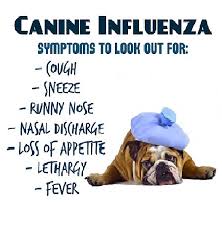 However, you need to worry more about lepto virus. It is a wicked disease in pets with the leptospira interrogans penetrating the skin and spreading through the body by way of the bloodstream.
However, you need to worry more about lepto virus. It is a wicked disease in pets with the leptospira interrogans penetrating the skin and spreading through the body by way of the bloodstream.
In some cases, a canine leptospirosis infection is asymptomatic. When symptoms do occur they can include fever, muscle pain, vomiting and diarrhea, loss of appetite, lethargy, depression and blood in the urine. More serious infections can cause jaundice and blood clotting. Canine leptospirosis is a disease that can be transmittable from pets to people and is becoming more common.
There is also the canine influenza virus, or H3N2, which is a highly contagious respiratory infection of dogs that is caused by an influenza A virus. The good thing is that there are some new vaccinations available for this.
Unfortunately, distemper is also on the rise again. It is very important to keep up their vaccinations every three years avoiding something that is so preventable.
You've been worrying about all the wrong things - now you know what to worry about!
Dr. Becker has been practicing veterinary medicine for more than 30 years and is a best-selling author, syndicated columnist and a frequent guest on national shows. You can also find Dr. Becker on Vetstreet.com, a new animal health and lifestyle website dedicated to giving pet owners the most accurate information possible to keep their pets healthy and happy. Follow Dr. Becker on Facebook and Twitter.
http://www.drmartybecker.com
 The Dangers of Doggie Dragon Breath - Dr. Debbie
The Dangers of Doggie Dragon Breath - Dr. Debbie
Does your dog's breath cause you to gag and turn away? Are your pet's kisses unwelcome due to fetid breath? Many dog owners recognize that distinctive smell which is often accepted as a condition of dog ownership. But stinky dog breath, while common, is actually a symptom of illness and should not be ignored. Doggie dragon breath, just like a blinking traffic light, is a sign of danger ahead. Don't ignore dog breath for what it is - an indicator of oral infection that if left unchecked will impact your dog's health and shorten his lifespan.
What's the big deal about bad breath? It's more than just the smell. Bad breath, also referred to as halitosis, arises from plaque and oral bacteria. Periodontal disease progresses as plaque accumulates, mineralizes into tartar, and inflammation causes destruction of the supportive tissues around the teeth. Dogs don't simply get cavities, rather they will lose their teeth as connective attachments deteriorate. Untreated dental infections jeopardize the health of nearby teeth and may lead to osteomyelitis - infection in the bone. And with time, untreated periodontal disease showers the bloodstream with bacterial products leading to other diseases such as liver, kidney and heart disease.
Fight Halitosis
The best way to control periodontal disease is to assume an offensive attack. Monitor your pet's oral health by flipping up your dog's lip to discover what is lurking underneath. Look for red inflamed gums, yellow or brown accumulation on the teeth, tooth discoloration, or bad breath. Any symptoms of periodontal disease should be addressed with your veterinarian. Have your pet's teeth cleaned regularly at the veterinary office and follow up with home dental care including daily brushing.
These professional veterinary cleanings are important to safely remove mineralized tartar, clean under the gum line, permit a thorough oral exam and take x-rays. Veterinary dental x-rays are an essential tool in detecting problems and have been shown to identify oral disease in 28-percent of dogs and 42-percent of cats that have an outwardly normal mouth.
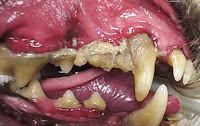 Don't fall into the hype about herbal spray-on products or 'awake' dental procedures - these only offer a cosmetic improvement in visible tartar, which only covers a small part of the tooth. These methods, often incorrectly touted as a safe alternative to professional cleanings, can't address the 60-percent of a dog's tooth which lies under the gum line - exactly where periodontal disease brews and does its damage.
Don't fall into the hype about herbal spray-on products or 'awake' dental procedures - these only offer a cosmetic improvement in visible tartar, which only covers a small part of the tooth. These methods, often incorrectly touted as a safe alternative to professional cleanings, can't address the 60-percent of a dog's tooth which lies under the gum line - exactly where periodontal disease brews and does its damage.
Once you identify that nasty doggie breath, you can be certain some degree of periodontal disease is present and dental intervention is needed. Statistics show that by 3 years of age 80-percent of dogs and cats already have periodontal disease. Don't forget that small and toy breeds of dog have accelerated dental problems diagnosed as young as 1 to 2 years of age.
Think prevention - have your dog's teeth cleaned and embrace home dental care steps. And the next time you find yourself in a cloud of canine halitosis, you won't turn the other way - you'll grab that toothbrush.
Featured veterinarian known as "Dr. Debbie" on national pet radio program, Animal Radio. Ebook author of "Yorkshire Terriers: How to Be Your Dog's Best Friend"; "Pugs: How to Be Your Dog's Best Friend"; "Mini Schnauzers: How to Be Your Dog's Best Friend"; and "Shih Tzu: How to Be Your Dog's Best Friend."
http://www.drdebbie.net
The 4 Best Movies Featuring Pets, That Only Pet Fanatics Have Seen
Robert Semrow, Animal Radio Listomania
 It's Robert Semrow, your pet world insider here with this week's Animal Radio Listomania. Ok pet fans, every year we see more movies that feature pets as main characters and parts of the movie plot. There are a couple of animated features coming out soon that my kids and I are anxiously waiting to see. In the meantime, I thought I would share my list of top non-animated movies featuring pets. This list is for those pet loving die-hards who are willing to sit through anything because their pets mean that much…and oh yeah, because their kids want to watch it as well…Let's get started:
It's Robert Semrow, your pet world insider here with this week's Animal Radio Listomania. Ok pet fans, every year we see more movies that feature pets as main characters and parts of the movie plot. There are a couple of animated features coming out soon that my kids and I are anxiously waiting to see. In the meantime, I thought I would share my list of top non-animated movies featuring pets. This list is for those pet loving die-hards who are willing to sit through anything because their pets mean that much…and oh yeah, because their kids want to watch it as well…Let's get started:
4 - Homeward Bound, The Incredible Journey. Ok, I admit I'm a sucker for a heartwarming tale about tails who love their humans. Two dogs and cat on a journey to reunite with their family... surviving danger, wild animals and the harsh elements…count me in. You'll recognize the voices in the movie, if not the pets. Cat and Dog lovers have a movie that they can agree on and enjoy.
 3. Hotel For Dogs. This is a fun and honestly inspiring concept. I would love to see us do this in real life. Take an abandoned hotel and turn it into a place to care for strays and those needing a home. They say from the mouths of children come the simplest and plainest truths. These kids take something that has been discarded and beaten down and build it back up. Not only do they do that for the building, but they do it for the animals as well. It's a fun, rollicking movie that has plenty of laughs and heart.
3. Hotel For Dogs. This is a fun and honestly inspiring concept. I would love to see us do this in real life. Take an abandoned hotel and turn it into a place to care for strays and those needing a home. They say from the mouths of children come the simplest and plainest truths. These kids take something that has been discarded and beaten down and build it back up. Not only do they do that for the building, but they do it for the animals as well. It's a fun, rollicking movie that has plenty of laughs and heart.
2 - Cats and Dogs - That's right, haven't we all thought about an ongoing underground movement of Dogs battling cats for the supremacy of petdom? Also, the idea of dogs having a secret agent team that battles Cat ninjas… honestly, I don't know how this enjoyable movie was rated 2nd on my list. It's a fun movie that really plays up the stereotypes of dogs and cats, but in a fun and entertaining way. My kids give it two thumbs up and my dogs …well, they are better prepared for any ninja cats that stop by.
 1 - Hachi: A Dog's Tale. OK, I saved the absolute tearjerker and most heart-warming tale as my number one choice. This movie is one of those that just makes you know that we are not over stating it when we say that pets are family members. This movie is about a man who rescues an abandoned dog and the incredible bond that the two share. Based on a true story, the love and devotion that the two show each other is something that any pet parent will be moved by. As someone who has shared that kind of a connection, I recommend this for all.
1 - Hachi: A Dog's Tale. OK, I saved the absolute tearjerker and most heart-warming tale as my number one choice. This movie is one of those that just makes you know that we are not over stating it when we say that pets are family members. This movie is about a man who rescues an abandoned dog and the incredible bond that the two share. Based on a true story, the love and devotion that the two show each other is something that any pet parent will be moved by. As someone who has shared that kind of a connection, I recommend this for all.
There's nothing better than cuddling up with your pets and watching a movie featuring pets. Share some of your favorite pet movies with us on the Animal Radio Facebook Page.
http://petworldinsider.com
 Animal Radio News - Lori Brooks
Animal Radio News - Lori Brooks
Looks Like Man's Best Friend Has Become Thieves Biggest Targets
If you think your dog is safe from thieves, the experts say think again. Dognappers are at work in both the cities and suburbs these days and stealing pets at an alarming rate. An estimated two million pets are stolen each year in the United States. That's up 32-percent according to the American Kennel Club. And the number of actual dogs stolen could be potentially much greater, because that statistic only reflects dogs reported missing in the news media and to the AKC. Surprisingly it seems no dog is safe, as they've been stolen from fenced-in yards and snatched from seemingly safe front porches. Experts say there are a number of different reasons for the thefts. Some of the stolen dogs are used for dog fighting either as a fighter or bait. Animals that are not "fixed" are often sold to puppy mills to be used as breeders and other dogs might be sold for a quick profit on Craigslist. There are some important steps all pet owners should take to protect their dog: never, ever leave your dog unattended, not even in a locked car or enclosure, because thieves will smash the glass to get them. Experts also suggest microchipping or purchasing a GPS collar or monitor, which can cost anywhere from $50 to $200. BUT one of the most important steps you can take now is to document your pet's history. Save your pet's entire dog licensing and veterinary care records. It doesn't matter if you get the dog from a friend, breeder or shelter, Kellie says, make sure you have the transfer of ownership documented.
 Dogs Saves Family From Deadly Carbon Monoxide Leak
Dogs Saves Family From Deadly Carbon Monoxide Leak
A Wisconsin mother is crediting their family's dog with saving their lives from a deadly carbon monoxide leak in their home. After family members starting becoming "sick" and lethargic, their dog Abby knew something was wrong and never gave up trying to get their attention. The family knew their furnace was on the fritz, but they didn't really think too much about it. When the mother began getting very sick, she decided to lie down. Abby jumped up on the bed, and began pawing at her then lifted the woman's head up with her nose. Abby then led the mom downstairs and sat next to the furnace so the woman could then hear the carbon monoxide detector going off
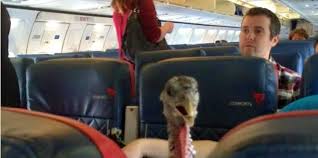 You Never Know Whom You'll Be Seated Next To On An Airplane
You Never Know Whom You'll Be Seated Next To On An Airplane
Surely you've heard about the turkey that traveled on a recent Delta airlines flight and the passenger who claimed the big bird was an emotional support animal. That was not the first strange animal to board a plane, nor will it be the last. In fact, emotional support animals are becoming increasingly common and their air travel is covered under the US Air Carrier Access Act, which lets passengers with disabilities bring animals aboard commercial airplanes. Those who wish to have an emotional support animal need only get a letter from a mental health professional to prove that they suffer from some form of disability. However here's some proof that it's not that difficult to get ESA (or emotional support animal) documentation. Just over a year ago, a New York woman obtained emotional support animal credentials for five unconventional pets. She says people also exploit emotional support animal allowances in terms of where they can take them. While service dogs, who are trained to perform a particular task such as responding to seizures or guiding those who are visually impaired, are allowed to go anywhere, emotional support animals are not. They are only covered by the Fair Housing Act and Air Carrier Access Act, and are not permitted in many other spaces, such as hotels, trains or stores. Many do not fully understand the laws and differences surrounding the two classifications of animals. She proved this when she took various emotional support animals to different public locations and convinced many to approve her entry. She flew from Newark to Boston with a pig, visited an art museum with a turtle and even shopped at Chanel with a snake.
 It's One Of The Great Debates Of Pet Owners: Should You Let Your Dog Or Cat Sleep On The Bed?
It's One Of The Great Debates Of Pet Owners: Should You Let Your Dog Or Cat Sleep On The Bed?
One concern has been whether sharing a bed with your pet may disturb your sleep. Many sleep specialists advise against it. But a recent study from the Center for Sleep Medicine at the Mayo Clinic in Arizona could change some minds. Researchers surveyed 150 sleep center patients and found that more than half of pet owners allowed their pets to sleep in the bedroom. One out of five described their pets as disruptive, but 41-percent said their pets were quiet and even beneficial to their nightly sleep. Experts say "If having a pet nearby helps you feel relaxed and gives someone a sense of security, which permits them to fall asleep with less difficulty, then by all means have the pet sleep with you, as long as they are clean and have no fleas." This study did NOT look at whether different types of pets, or even different breeds, were more disruptive than others but the researchers say they hope to investigate those questions in the future.

NEWS UPDATE brought to you by Drs. Foster & Smith, affordable pet supplies. Low prices every day, so you save on every order.
 Listen to the entire Podcast of this show (#847)
Listen to the entire Podcast of this show (#847)



 When I began working as a veterinary technician more than 20 years ago, I never dreamed of encouraging pet owners to brush their cat or dog's teeth. But, all of that has changed.
When I began working as a veterinary technician more than 20 years ago, I never dreamed of encouraging pet owners to brush their cat or dog's teeth. But, all of that has changed.  Start the sessions at the end of the day when your pet is tired and not all wound up, especially with dogs. Don't do it first thing in the morning before they have their walk. Try not to restrain your pet too tightly. Brushing should be a bonding experience reinforced with praise and rewards. It should never be traumatic for you or your pet.
Start the sessions at the end of the day when your pet is tired and not all wound up, especially with dogs. Don't do it first thing in the morning before they have their walk. Try not to restrain your pet too tightly. Brushing should be a bonding experience reinforced with praise and rewards. It should never be traumatic for you or your pet. You really only need to worry about the outsides of the top and bottom teeth, and you can keep the mouth closed by placing your hand around your pet's muzzle. Lift the cheek on one side of the mouth and brush the outside surface of the teeth just as you would brush your own. The brush movement should be in a circular pattern with ten short motions cover three to four teeth at a time. Placing your index finger directly behind the bristles will help stabilize the brush. Increase the number of teeth brushed each time until your pet accepts the routine willingly. Keep the sessions at 15 to 30 seconds initially.
You really only need to worry about the outsides of the top and bottom teeth, and you can keep the mouth closed by placing your hand around your pet's muzzle. Lift the cheek on one side of the mouth and brush the outside surface of the teeth just as you would brush your own. The brush movement should be in a circular pattern with ten short motions cover three to four teeth at a time. Placing your index finger directly behind the bristles will help stabilize the brush. Increase the number of teeth brushed each time until your pet accepts the routine willingly. Keep the sessions at 15 to 30 seconds initially.  What are the three things that pet owners worry too much about and three things they worry to little about?
What are the three things that pet owners worry too much about and three things they worry to little about? On the other hand, people worry too little about even using a parasite control product as directed year round for the life of your pet. People try to time it by going on and off of it depending upon the time of year and weather, or whether their pet is indoors our outdoors.
On the other hand, people worry too little about even using a parasite control product as directed year round for the life of your pet. People try to time it by going on and off of it depending upon the time of year and weather, or whether their pet is indoors our outdoors. The problem is that most people don't worry enough about how they feed their pet. It is a good idea to use food puzzles and food dispensing devices. There has been a recent push towards more enrichment activities for pets. Think of lions and tigers in zoos. They actually have more enrichment activities than the average cat in a home. So much of an animal's exuberance revolves around hunting for food. You shouldn't just drop some food in a bowl and forget about all of the other pieces that go along with hunting.
The problem is that most people don't worry enough about how they feed their pet. It is a good idea to use food puzzles and food dispensing devices. There has been a recent push towards more enrichment activities for pets. Think of lions and tigers in zoos. They actually have more enrichment activities than the average cat in a home. So much of an animal's exuberance revolves around hunting for food. You shouldn't just drop some food in a bowl and forget about all of the other pieces that go along with hunting.  However, you need to worry more about lepto virus. It is a wicked disease in pets with the leptospira interrogans penetrating the skin and spreading through the body by way of the bloodstream.
However, you need to worry more about lepto virus. It is a wicked disease in pets with the leptospira interrogans penetrating the skin and spreading through the body by way of the bloodstream.  The Dangers of Doggie Dragon Breath -
The Dangers of Doggie Dragon Breath - Don't fall into the hype about herbal spray-on products or 'awake' dental procedures - these only offer a cosmetic improvement in visible tartar, which only covers a small part of the tooth. These methods, often incorrectly touted as a safe alternative to professional cleanings, can't address the 60-percent of a dog's tooth which lies under the gum line - exactly where periodontal disease brews and does its damage.
Don't fall into the hype about herbal spray-on products or 'awake' dental procedures - these only offer a cosmetic improvement in visible tartar, which only covers a small part of the tooth. These methods, often incorrectly touted as a safe alternative to professional cleanings, can't address the 60-percent of a dog's tooth which lies under the gum line - exactly where periodontal disease brews and does its damage. It's Robert Semrow, your pet world insider here with this week's Animal Radio Listomania. Ok pet fans, every year we see more movies that feature pets as main characters and parts of the movie plot. There are a couple of animated features coming out soon that my kids and I are anxiously waiting to see. In the meantime, I thought I would share my list of top non-animated movies featuring pets. This list is for those pet loving die-hards who are willing to sit through anything because their pets mean that much…and oh yeah, because their kids want to watch it as well…Let's get started:
It's Robert Semrow, your pet world insider here with this week's Animal Radio Listomania. Ok pet fans, every year we see more movies that feature pets as main characters and parts of the movie plot. There are a couple of animated features coming out soon that my kids and I are anxiously waiting to see. In the meantime, I thought I would share my list of top non-animated movies featuring pets. This list is for those pet loving die-hards who are willing to sit through anything because their pets mean that much…and oh yeah, because their kids want to watch it as well…Let's get started:
 3. Hotel For Dogs. This is a fun and honestly inspiring concept. I would love to see us do this in real life. Take an abandoned hotel and turn it into a place to care for strays and those needing a home. They say from the mouths of children come the simplest and plainest truths. These kids take something that has been discarded and beaten down and build it back up. Not only do they do that for the building, but they do it for the animals as well. It's a fun, rollicking movie that has plenty of laughs and heart.
3. Hotel For Dogs. This is a fun and honestly inspiring concept. I would love to see us do this in real life. Take an abandoned hotel and turn it into a place to care for strays and those needing a home. They say from the mouths of children come the simplest and plainest truths. These kids take something that has been discarded and beaten down and build it back up. Not only do they do that for the building, but they do it for the animals as well. It's a fun, rollicking movie that has plenty of laughs and heart. 1 - Hachi: A Dog's Tale. OK, I saved the absolute tearjerker and most heart-warming tale as my number one choice. This movie is one of those that just makes you know that we are not over stating it when we say that pets are family members. This movie is about a man who rescues an abandoned dog and the incredible bond that the two share. Based on a true story, the love and devotion that the two show each other is something that any pet parent will be moved by. As someone who has shared that kind of a connection, I recommend this for all.
1 - Hachi: A Dog's Tale. OK, I saved the absolute tearjerker and most heart-warming tale as my number one choice. This movie is one of those that just makes you know that we are not over stating it when we say that pets are family members. This movie is about a man who rescues an abandoned dog and the incredible bond that the two share. Based on a true story, the love and devotion that the two show each other is something that any pet parent will be moved by. As someone who has shared that kind of a connection, I recommend this for all. Animal Radio News -
Animal Radio News -  Dogs Saves Family From Deadly Carbon Monoxide Leak
Dogs Saves Family From Deadly Carbon Monoxide Leak
 It's One Of The Great Debates Of Pet Owners: Should You Let Your Dog Or Cat Sleep On The Bed?
It's One Of The Great Debates Of Pet Owners: Should You Let Your Dog Or Cat Sleep On The Bed?
